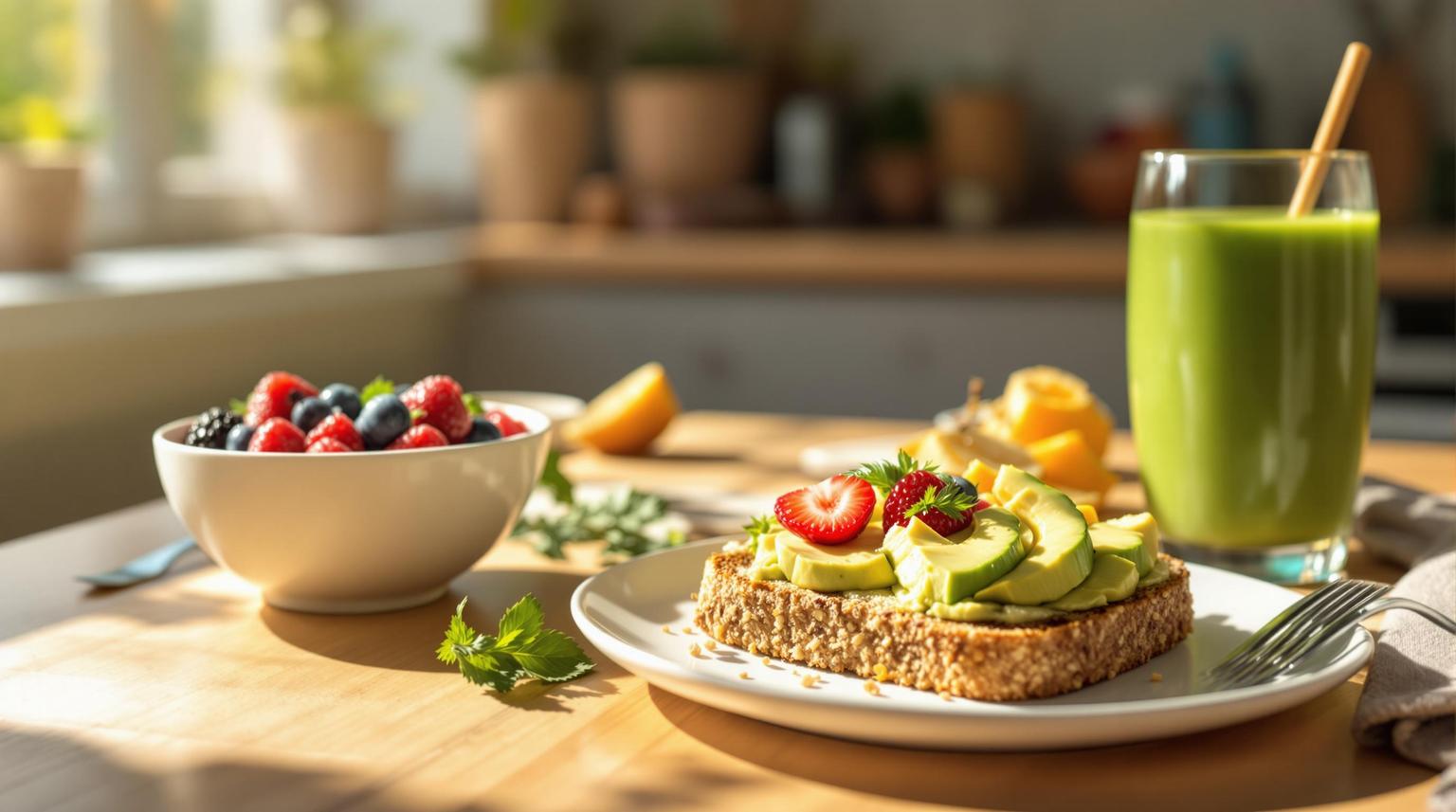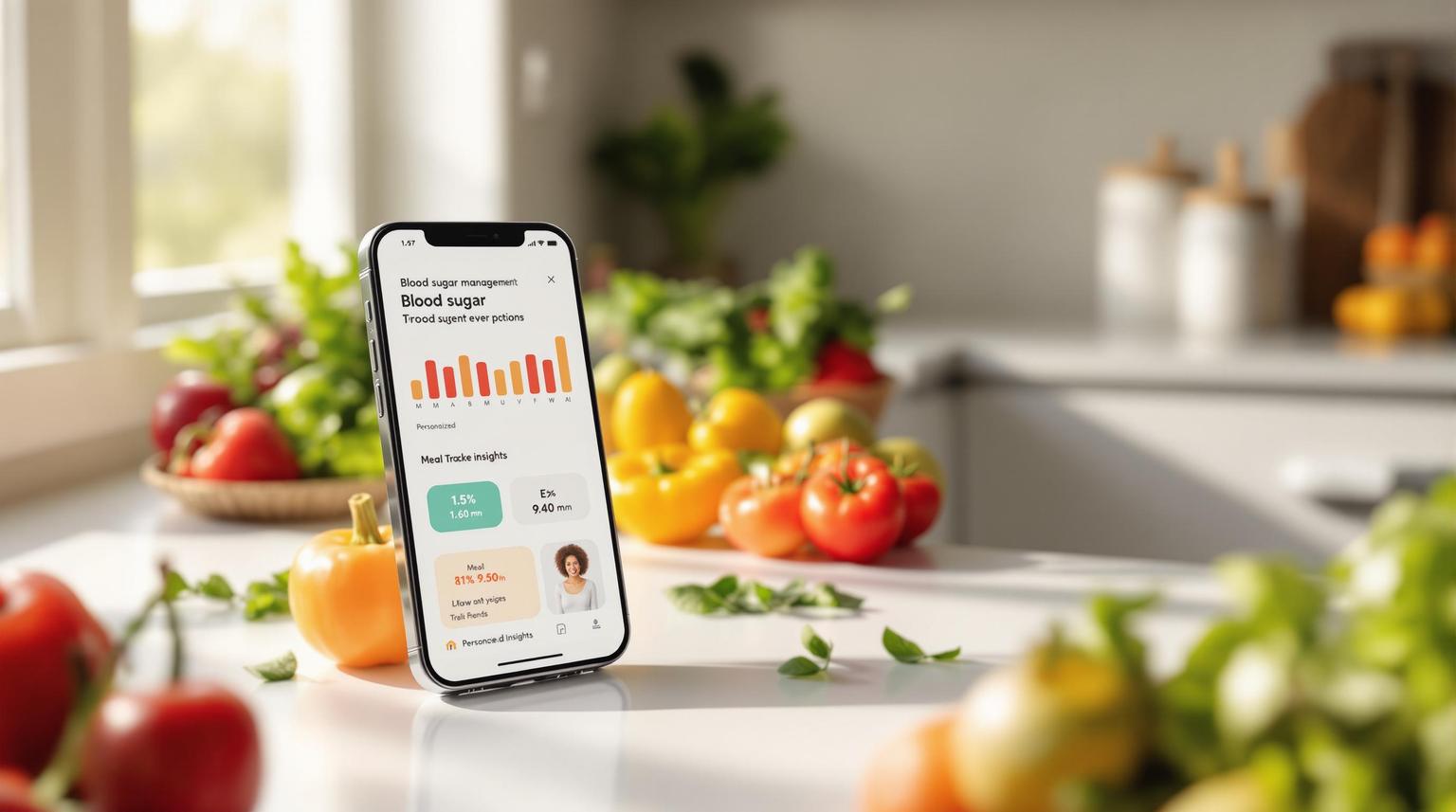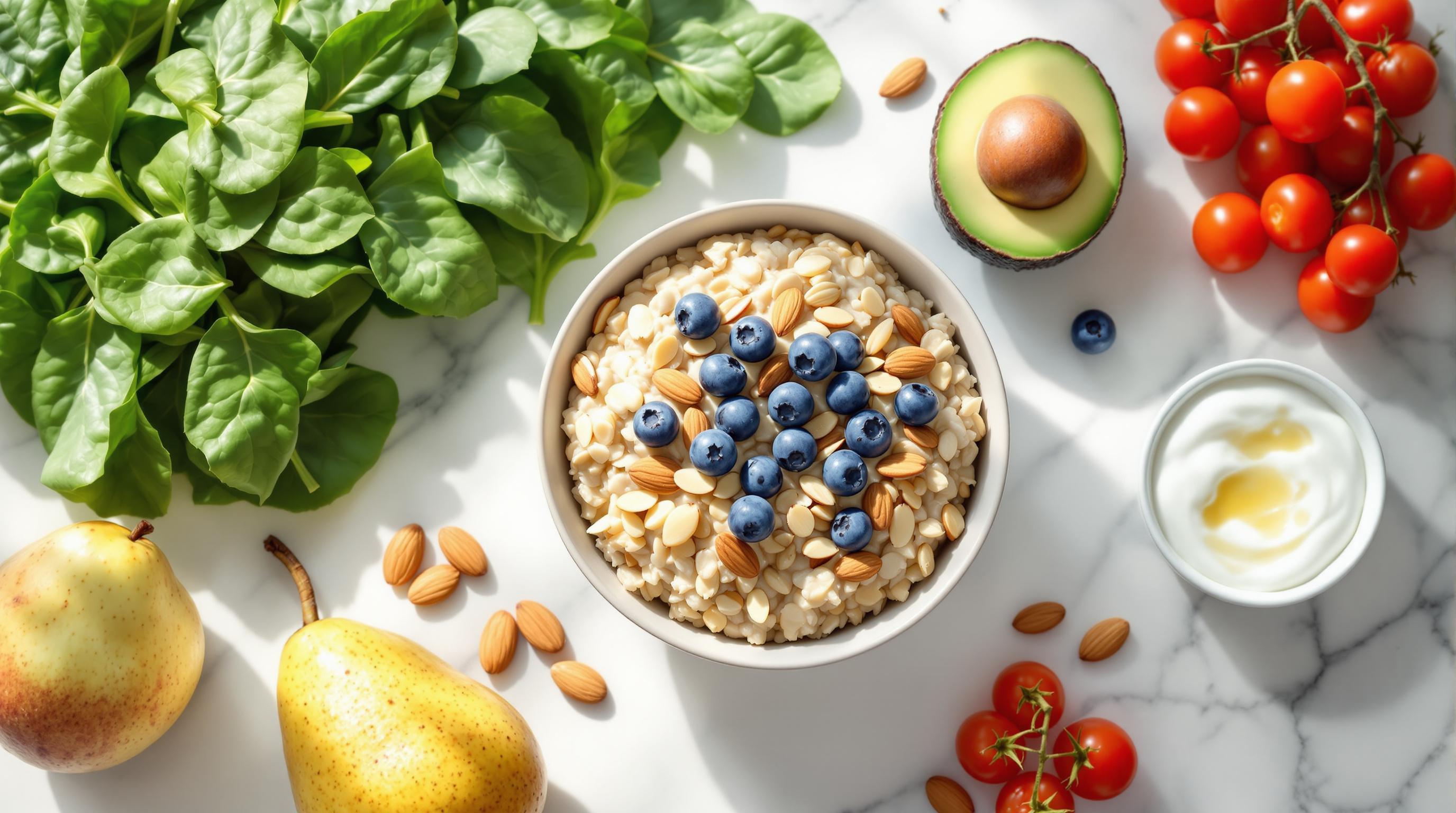Sweeteners affect blood sugar differently, which is important to know for managing diabetes or maintaining steady energy levels. The glycemic index (GI) measures how much a food raises blood sugar on a scale of 0 to 100. Lower-GI sweeteners cause slower, steadier blood sugar increases, while high-GI options lead to sharp spikes. Here's a quick summary:
- High-GI Sweeteners: Table sugar (GI 65), date sugar (GI 103), corn syrup (GI 75).
- Medium-GI Sweeteners: Honey (GI 50–80), maple syrup (GI 54), molasses (GI 55).
- Low-GI Sweeteners: Coconut sugar (GI 35–42), agave syrup (GI 15–30), fructose (GI 19–25).
- Zero-GI Options: Stevia, monk fruit, erythritol.
For better blood sugar control, opt for low- or zero-GI sweeteners. Tools like the Logi Glycemic Index Tracker App can help you monitor sweetener choices and glycemic load in real-time.
Alternative Sweeteners: Monk Fruit, Stevia, Erythritol & Xylitol – Dr. Berg
Glycemic Index Chart of Common Sweeteners
Knowing the glycemic index (GI) of various sweeteners can help you make better choices for managing blood sugar levels. Here's a breakdown of common sweeteners, categorized by their GI values and their effects on blood glucose.
Natural Sugars and Their GI Values
Natural sweeteners can have a wide range of effects on blood sugar, from rapid spikes to more gradual increases. Here's how they stack up:
High-GI Natural Sweeteners: These sweeteners can cause sharp increases in blood sugar. For example, date sugar has a GI of 103, brown rice syrup comes in at 98, and corn syrup measures 75. If you're watching your blood sugar, use these sparingly.
Medium-GI Natural Options: These sweeteners fall in the middle range. Honey, depending on the variety, has a GI of 50–80, with clover honey specifically around 59–61. Maple syrup has a GI of 54, molasses is at 55, and high-fructose corn syrup ranges between 50–68. Cane sugar typically falls in the 60–65 range.
Lower-GI Natural Sweeteners: These options are better for maintaining steady blood sugar levels. Coconut sugar has a GI of 35–42, and fructose, while low on the GI scale at 19–25, comes with other metabolic concerns.
| Natural Sweetener | Glycemic Index | Impact |
|---|---|---|
| Date Sugar | 103 | High |
| Brown Rice Syrup | 98 | High |
| Corn Syrup | 75 | High |
| Honey | 50–80 | Medium to High |
| Cane Sugar | 60–65 | Medium |
| High-Fructose Corn Syrup | 50–68 | Medium |
| Maple Syrup | 54 | Medium |
| Molasses | 55 | Medium |
| Coconut Sugar | 35–42 | Low to Medium |
| Fructose | 19–25 | Low |
Low-GI Sweeteners: Sugar Alcohols and Natural Options
For those looking to minimize blood sugar impact, sugar alcohols and certain natural sweeteners are excellent choices.
Sugar Alcohols: These sweeteners are very low on the GI scale. Erythritol has a GI of 0 and is about 60–70% as sweet as sugar. Mannitol has a GI of 2, sorbitol measures 9, and xylitol ranges from 7–13 while matching sugar's sweetness. Maltitol, with a GI of 35, is still considered low.
Natural Zero-GI Options: Stevia and monk fruit both have a GI of 0. Stevia is up to 300 times sweeter than sugar, while monk fruit is 150–200 times sweeter.
Specialty Low-GI Sweeteners: Allulose offers about 70% of sugar's sweetness with minimal glycemic impact, and yacon syrup has a GI of just 1. Agave nectar, though low on the GI scale at 10–19, is high in fructose, so it's best to use it in moderation.
Artificial Sweeteners and GI
Artificial sweeteners are another option for controlling blood sugar, as they have a GI of 0.
Common Artificial Sweeteners: Aspartame, sucralose (Splenda), saccharin, and acesulfame K provide intense sweetness without raising blood glucose. For example, sucralose is 600 times sweeter than sugar.
Metabolic Considerations: While they don’t affect blood sugar directly, some research suggests artificial sweeteners might influence gut microbiota, which could have broader health implications.
Health Effects of Different Sweeteners
The way sweeteners impact our health goes beyond just their glycemic index (GI). They influence insulin response and metabolic health in varying ways, making it important to understand their effects.
High-GI Sweeteners and Blood Sugar Spikes
Sweeteners with a high glycemic index, like table sugar and corn syrup, can cause rapid spikes in blood sugar levels. This triggers the pancreas to release large amounts of insulin. Over time, frequent consumption of these sweeteners can lead to insulin resistance, where the body becomes less effective at managing blood sugar. This creates a cycle of elevated blood sugar levels, increasing the risk of developing type 2 diabetes. Low-GI sweeteners, on the other hand, offer a gentler alternative.
Benefits of Low-GI Sweeteners
Low-GI sweeteners provide a slower, more stable rise in blood sugar, avoiding the sharp spikes and crashes that high-GI options can cause. This steadier response helps prevent post-meal fatigue and hunger, which are often linked to fluctuating blood sugar levels. According to market trends, the natural sweetener industry is projected to grow from $2.8 billion in 2020 to $3.8 billion by 2025.
For individuals managing diabetes or prediabetes, low-GI sweeteners can be particularly helpful. They allow for better blood sugar control without sacrificing sweetness. Dr. Thinh Xuan Ho, a Primary Care Physician at Baylor St. Luke's Medical Group, highlights the benefits of naturally low-GI foods:
"Most fresh fruits have a low to medium glycemic index, so they do not lead to a sharp rise in blood glucose level compared to other carbohydrate containing foods."
While low-GI sweeteners offer benefits, artificial sweeteners present a more complicated health scenario.
Artificial Sweetener Health Considerations
Artificial sweeteners, while not raising blood sugar directly, come with their own set of health concerns that researchers are still unraveling. For example, studies have found that consuming sucralose can lead to higher insulin levels. Additionally, frequent intake of artificially sweetened beverages has been associated with a greater risk of type 2 diabetes, suggesting a possible link to insulin resistance over time.
The impact of artificial sweeteners on the gut microbiome is another area of concern. Some research suggests that these sweeteners may disrupt the balance of gut bacteria, potentially contributing to prediabetic conditions. Weight management is also a debated topic. One study showed that individuals consuming over 21 diet drinks per week were twice as likely to be overweight or obese. Another study reported a 47% greater increase in BMI among those who consumed artificially sweetened beverages compared to those who didn’t.
Experts have varying views on artificial sweeteners. Dr. Christopher Gardner, Associate Professor of Medicine at Stanford University, offers a cautious endorsement:
"While they are not magic bullets, smart use of non-nutritive sweeteners could help you reduce added sugars in your diet, therefore lowering the number of calories you eat. Reducing calories could help you attain and maintain a healthy body weight, and thereby lower your risk of heart disease and diabetes."
However, Dr. Melissa Young, a Functional Medicine Specialist, takes a more critical stance:
"Really, both sugar and artificial sweeteners are a problem for your health. But if we're comparing what's worse, artificial sweeteners are far worse than sugar."
Reflecting these concerns, the World Health Organization (WHO) has advised against using non-nutritive sweeteners for weight control or to prevent diet-related noncommunicable diseases. Artificial sweeteners are also up to 700 times sweeter than sugar, which can intensify cravings for overly sweet foods and diminish the appeal of healthier, nutrient-rich options. Choosing the right sweeteners is essential for managing glycemic load and promoting overall health.
sbb-itb-0899721
How to Substitute Sweeteners for Better Blood Sugar Control
Switching out high-glycemic index (GI) sweeteners for lower-GI alternatives can help manage blood sugar levels without sacrificing sweetness. The key lies in understanding how different sweeteners behave in recipes, so you can adjust accordingly.
Recipe Substitution Tips
When replacing traditional sugar, keep in mind that it doesn't just add sweetness - it also affects texture, moisture, and color through chemical reactions. For example, many low-GI sweeteners don't participate in the Maillard reaction, which means baked goods may turn out lighter in color. You might also notice changes in texture, a slight aftertaste, or reduced volume in cakes and cookies compared to recipes made with sugar.
If you're using honey or maple syrup, which add moisture, you'll need to reduce other liquids in the recipe. These can often replace sugar at a 1:1 ratio, though tweaking the liquid ingredients ensures the right consistency. Natural fruit-based alternatives, like mashed bananas, unsweetened applesauce, or date paste, are another great option. They not only replace sugar but also add fiber and nutrients. These work particularly well in muffins, quick breads, and pancakes, though they will contribute their own distinct flavors.
For those seeking zero-calorie options, monk fruit and stevia are highly concentrated sweeteners. Monk fruit is about 150 times sweeter than sugar, so you'll need only a tiny amount. Stevia also requires precise measurements due to its intensity. On the other hand, erythritol can typically replace sugar in a 1:1 ratio, making it easier to use. A blend of stevia and erythritol can closely mimic sugar's sweetness and texture while minimizing aftertaste.
Elizabeth Traxler, a Registered Dietitian at University Hospitals, explains:
"Natural sweeteners have become more appealing than sugar because they are less processed and may contain more nutrients and provide healthy benefits."
Sweetener Comparison Table
Here’s a quick reference table to help you choose the right sweetener for your needs:
| Sweetener | Glycemic Index | Best Uses | Substitution Ratio | Key Considerations |
|---|---|---|---|---|
| Agave Syrup | 15 | Drinks, desserts | About 2/3 cup per 1 cup sugar | Sweeter than sugar; reduce liquids |
| Coconut Sugar | 35 | Baking, pastries | 1:1 ratio | Caramelized flavor; less sweet |
| Date Syrup | 47 | Baking, marinades | Varies | Distinct flavor; contains fiber |
| Erythritol | 0 | Baking, all-purpose | 1:1 ratio | Can create a cooling sensation |
| Monk Fruit | 0 | Baking, hot drinks | Use sparingly | Extremely sweet; may alter texture |
| Stevia | 0 | Beverages, light baking | Use sparingly | Potent; may have a bitter aftertaste |
Practical Applications
For beverages, stevia is a reliable choice - it blends well and doesn’t spike blood sugar. In baking, coconut sugar’s caramelized flavor pairs nicely with traditional recipes, though its lower sweetness may require adjustments. Agave syrup, with its mild flavor, works well in cold drinks and smoothies.
Date syrup is a great option for savory recipes like marinades and glazes, adding both sweetness and essential minerals. Start with a small amount and adjust to taste, as its flavor is quite distinct.
Keep an eye on your baked goods, as some alternative sweeteners can cause faster browning. Adjust your oven temperature or cooking time as needed.
Finally, remember that while low-GI sweeteners can help stabilize blood sugar, the overall impact depends on the other components of your meal. Portion control and mindful consumption remain important, as even lower-GI sweeteners can affect blood sugar when used in large amounts.
Using Technology for Glycemic Load Management
Keeping track of sweetener choices to manage blood sugar can feel overwhelming. Thankfully, technology has made this process much easier by offering tools that provide insights into your diet and its effects on your body. Let’s take a closer look at how Logi simplifies sweetener selection and blood sugar tracking.
How Logi Supports Sweetener Choices
The Logi – Glycemic Index Tracker App takes the guesswork out of choosing the right sweeteners. With an impressive 4.7 out of 5 rating on the App Store from 16 reviews, it’s clear that users are finding it helpful for managing their blood sugar. This app complements earlier strategies for minimizing blood sugar spikes by offering practical, real-time insights.
Using Logi’s AI-powered meal scanner, you can snap a quick photo of your plate, and the app instantly provides details about the glycemic index (GI) and glycemic load (GL) of your food. This means you can immediately understand how different sweeteners might influence your blood sugar.
"I am so impressed with the ability of this app to recognize food and quantities whether it be from text, picture of a brand product packaging or a plate of food. It's giving me valuable feedback on an entry by entry, and total daily consumption basis of GL, calories, protein, etc. It even suggests healthier alternatives." – Herstory Hunter
One standout feature of Logi is its ability to offer personalized alternatives. If the app detects high-GI sweeteners in your meals, it doesn’t just flag them - it also suggests specific lower-GI substitutes that align with your blood sugar goals.
Additionally, Logi provides customized low-glycemic meal plans tailored to your preferences and dietary needs. With its built-in macro calculator, you can see how your sweetener choices fit into your overall intake of protein, fats, and carbs, giving you a broader perspective on your nutrition.
The Perks of Digital Glycemic Load Tracking
Digital tools like Logi take blood sugar management to the next level, offering benefits that traditional methods can’t match. For instance, features like Habit Compass help you spot patterns in your eating habits - such as consistently reaching for high-GI sweeteners during midday slumps.
Real-time feedback is another game-changer. It allows you to make quick adjustments to your meals to better manage your energy levels. One user shared their experience:
"Easy to use. Results informative and pertinent. Definitely a must-have app for folks with prediabetes looking to ward off type 2 diabetes." – Herbb1
By logging meals and tracking your progress, Logi helps you build a clear picture of how different sweeteners affect your body. This data-driven approach takes the guesswork out of meal planning. Instead of wondering whether a sweetener fits into your daily glycemic load target, you can see its exact impact and adjust other meals accordingly.
The convenience of digital tracking is hard to beat. With pricing starting at $6.99 per month or $39.99 annually, Logi makes it easy to stay consistent and keep your blood sugar management on track.
Conclusion
Grasping the glycemic index (GI) of sweeteners is a crucial step in managing blood sugar and maintaining steady energy throughout the day. Sweeteners vary widely in their GI values - ranging from maltose at 105 to stevia at 0 - showing just how differently they can impact your body’s glucose levels.
The main takeaway? Opt for low-GI sweeteners whenever you can. Swapping table sugar (GI 65) for alternatives like agave (GI 15–30), xylitol (GI 7–13), or stevia (GI 0) can help minimize blood sugar spikes without sacrificing sweetness.
When making these changes, start simple. Use one-to-one replacements where practical, but keep in mind that some low-GI options are far sweeter than sugar, so you’ll need smaller amounts. The goal isn’t to be perfect - it’s to make steady progress toward balanced blood sugar and better health. These adjustments can easily fit into the broader strategies discussed earlier.
To make this process even smoother, technology offers a helping hand. Tools like the Logi Glycemic Index Tracker App provide real-time feedback on meals and personalized recommendations, simplifying the journey toward better glucose control.
Remember, moderation matters. Combine a solid understanding of GI values with mindful substitutions and digital tools to maintain consistent blood sugar levels. Whether you’re managing diabetes, working to prevent blood sugar issues, or just looking for more consistent energy, choosing the right sweeteners is a small but impactful step toward a healthier lifestyle.
FAQs
What’s the difference between low-GI and high-GI sweeteners in how they affect blood sugar?
Low-GI sweeteners are known for their gentler effect on blood sugar levels. They cause glucose to rise more gradually, which helps maintain steadier energy throughout the day. This makes them a helpful choice for managing blood sugar effectively.
On the other hand, high-GI sweeteners can trigger sharp spikes in blood sugar. These sudden changes can be particularly difficult for individuals dealing with diabetes or insulin resistance. Opting for low-GI sweeteners is often suggested as a smarter way to support blood sugar control and promote better overall health.
Are artificial sweeteners safe to use, even though they have a zero glycemic index?
Artificial sweeteners boast a zero glycemic index, making them a popular sugar substitute. However, they may still spark health concerns for some. Studies have pointed to possible effects on blood sugar regulation, gut health, and metabolism. Additionally, certain individuals might experience side effects like digestive upset, headaches, or skin irritations.
While research generally shows that artificial sweeteners are safe when used in moderation, their long-term impact remains uncertain. If you encounter any negative reactions or have specific health worries, it’s wise to consult a healthcare provider to determine if they’re a suitable option for you.
How can I replace high-glycemic sweeteners with healthier, low-GI options in recipes?
To replace high-glycemic sweeteners with options that are gentler on blood sugar, try natural choices like stevia, monk fruit, or agave syrup. These alternatives have a smaller effect on blood sugar levels compared to traditional sweeteners.
When it comes to baking, you can also use ingredients like mashed bananas, unsweetened applesauce, or date paste. These not only add sweetness but also help lower the glycemic impact of your recipes.
For recipes that require heating, pick sweeteners that retain their flavor under high temperatures, such as advantame, to ensure consistent results. These adjustments can support better blood sugar management while creating meals that are both tasty and more nutritious.



